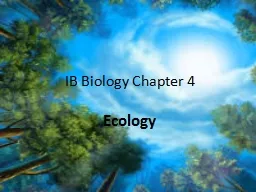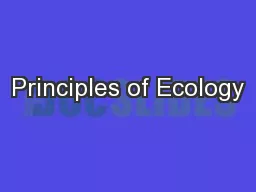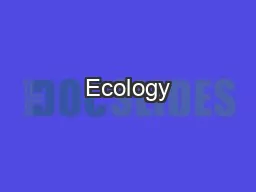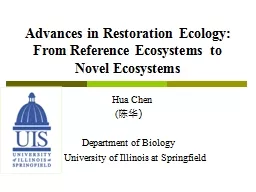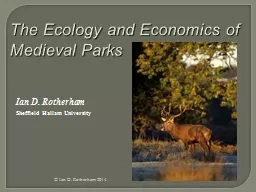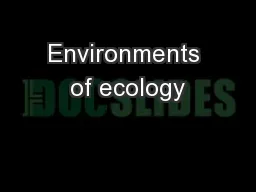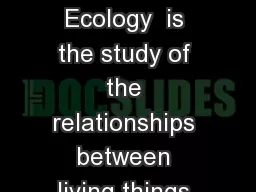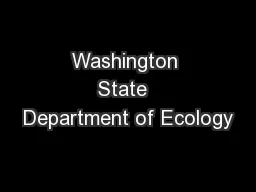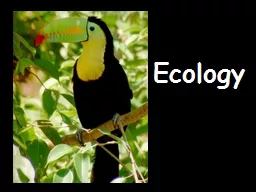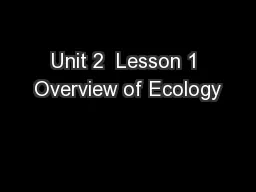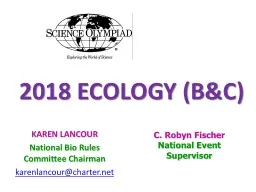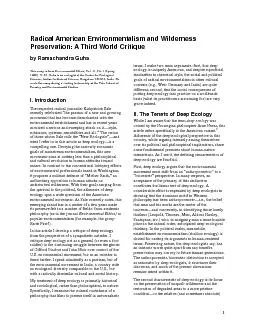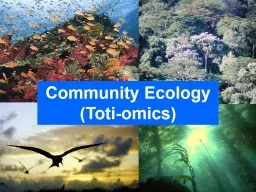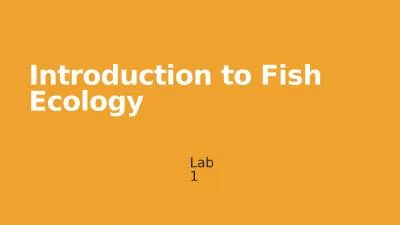PPT-IB Biology Chapter 4 Ecology
Author : olivia-moreira | Published Date : 2019-03-20
Species communities and ecosystems Interdependence of Living Organisms 1980eruption Mt St Helenssee p172 What is a species Defined as a Made up of organisms
Presentation Embed Code
Download Presentation
Download Presentation The PPT/PDF document "IB Biology Chapter 4 Ecology" is the property of its rightful owner. Permission is granted to download and print the materials on this website for personal, non-commercial use only, and to display it on your personal computer provided you do not modify the materials and that you retain all copyright notices contained in the materials. By downloading content from our website, you accept the terms of this agreement.
IB Biology Chapter 4 Ecology: Transcript
Species communities and ecosystems Interdependence of Living Organisms 1980eruption Mt St Helenssee p172 What is a species Defined as a Made up of organisms that. (LSU BIOL 4253, Sections 1 & 2, Spring 2015). Composite satellite image (“Blue Marble 2012”) from Wikimedia Commons. A312 Life Sciences Bldg.. kharms@lsu.edu. Dr. Kyle E. Harms. http://. www.kharms.biology.lsu.edu. (LSU BIOL 4253, Section 3, Fall 2015). Composite satellite image (“Blue Marble 2012”) from Wikimedia Commons. A312 Life . Sciences . Annex. kharms@lsu.edu. Dr. Kyle E. Harms. http://. www.kharms.biology.lsu.edu. The scientific study of the distribution and abundance of organisms and the interactions that determine distribution and abundance. Begon. , Harper, Townsend, 2006, Ecology, Blackwell. Lecture outline. . Hua. Chen. (. 陈华. ). Department of Biology. University of Illinois at Springfield. Roadmap. Ecosystem degradation, ecological restoration, and restoration ecology . Reference and dynamic reference . Economics of . Medieval Parks. © Ian D. Rotherham . 2014. Ian D. Rotherham. Sheffield . Hallam University. . Wood-pasture was once the most abundant type of wooded landscape in north-western Europe. . holism. reductionism. climax community. Organicism. teleology. deep ecology. Gaia theory . positive versus negative biotic interactions. pristine myth. Films often portray organisms and ecological interactions . In short, . ecology . is the scientific study of the . interactions of organisms with their environment. .. All organisms . interact. with other organisms in their surroundings and with the nonliving portion of their environment. . Spill Prevention, Preparedness and Response Program. February 2013 SOSC Report. Washington Spills. past 12 months . Reported Spills: . 4033. Field . Response:. . 813 (20.2%). C-Plan Rule Update WAC 173-182. WORKSHEET. Go over Sections F, G, and H. AFTER THE QUIZ. Work on Section I. DO NOW. Get out EOC Daily sheet, worksheet, and notes. BIOLOGY EOC BIO47. The diagram below shows a plant’s response to stimuli.. and. Levels Of Organization in . Biology and Ecology. Springfield Central High School. Questions to Answer. Daily Problem Set Unit 2- #1. 1. . Explain what ecology is. . 2. . In the relationship between the lynx and the hare, what factors, biotic and . 2018 ECOLOGY (B&C) KAREN LANCOUR National Bio Rules Committee Chairman karenlancour@charter.net C. Robyn Fischer National Event Supervisor Ecology Events Ecology – principles of ecology related to terrestrial environments – II. The Tenets of Deep Ecology While I am aware that the term deep ecology was coined by the Norwegian philosopher Arne Naess, this article refers specifically to the American variant.2 Adherents of Geography. Resources. Phylogeny. Community. Redrawn from Fauth . et al. . (1996). Community. – collection of species that occur at the same place & time, circumscribed by natural (. e.g. ., serpentine soil), arbitrary, or artificial (. Lab 1 . Fish Ecology:. is . the study of the processes influencing the distribution and abundance of fishes, the interactions among fishes, and the interactions between fishes with their environment..
Download Document
Here is the link to download the presentation.
"IB Biology Chapter 4 Ecology"The content belongs to its owner. You may download and print it for personal use, without modification, and keep all copyright notices. By downloading, you agree to these terms.
Related Documents

